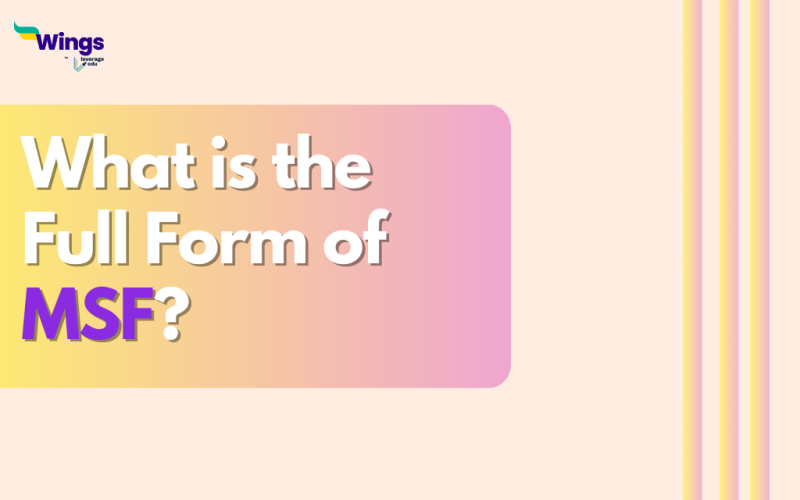MSF Full Form: MSF stands for Marginal Standing Facility. The Reserve Bank of India (RBI) employs many measures to control currency circulation throughout the economy’s anatomy. The repo rate, reverse repo rate, and marginal standing facility (MSF) are some of the tools used in its monetary policy.
The RBI introduced MSF, which allows commercial banks and lenders to expand their liquidity overnight. The service was launched in 2011-12 to assist financial institutions in maintaining capital flow in the event of an emergency. This option is especially advantageous for worried banks because they can pledge government securities and obtain funds within 24 hours.
How Does MSF Work?
Table of Contents
Marginal Standing Facility Rates are typically 0.25% to 25 basis points higher than repo rates.
- A financial institution can receive up to 1% of its SLR securities or net demand and time liabilities (NDTL) using this programme.
- Furthermore, when it was first introduced in 2011, the MSF rate of interest was 100 basis points higher than the repo rate.
- Following that, in 2013, the RBI boosted this rate by 300 basis points, or 3%, to manage the INR’s decreasing value. This rate was later decreased by the RBI by 50 basis points.
Also Read- What is the Full Form of Tax?
MSF Rate vs Repo Rate
- The repo rate is applied to short-term loans, whereas the MSF rate is applied to overnight or emergency financing.
- The repo rate applies to commercial banks, while the MSF rate applies to qualifying scheduled banks.
- Banks sell government securities against a repurchase agreement in the case of repo rates, but in the event of MSF, banks sell excess government securities to obtain money.
- Banks can employ SLR securities while borrowing against the MSF rate, which is not permitted when borrowing against the repo rate.
- The MSF rate is always 0.25% higher than the repo rate.
Must Read: What’s the Full Form of MUA?
- NDTL- It stands for Net Demand and Time Deposit Liabilities.
- SLR: The term stands for Statutory Liquidity Ratio
- Repo Rate: The repo rate is the interest rate charged by the RBI to commercial banks when they borrow money from it.
- Reverse Repo Rate: The reverse repo rate is the interest rate at which the Reserve Bank of India borrows from commercial banks.
- Bank Rate: The bank rate is the interest rate at which the Reserve Bank of India makes long-term loans to commercial banks. It is another tool in the RBI’s monetary policy that assists the central bank in stabilising the economy’s cash flow.
Must Read: What is the Full Form of CMC in Indian Companies?
Other MSF Full Forms
- MSF in Degree – Master of Finance
- MSF in government – Maharashtra Security Force
- MSF in medical terms – Doctors Without Borders/Médecins Sans Frontières (MSF)
- MFS in the hospital – Miller Fisher Syndrome
Popular Full Forms
We hope this blog has helped you understand the full form of MSF and everything related to it. If you want to know more, find the 300+ full forms list on our blog. In the world of short forms, you can rely on the Leverage edu page to learn more about full forms like this! Connect with us study abroad experts to achieve your international dream today!
 One app for all your study abroad needs
One app for all your study abroad needs













